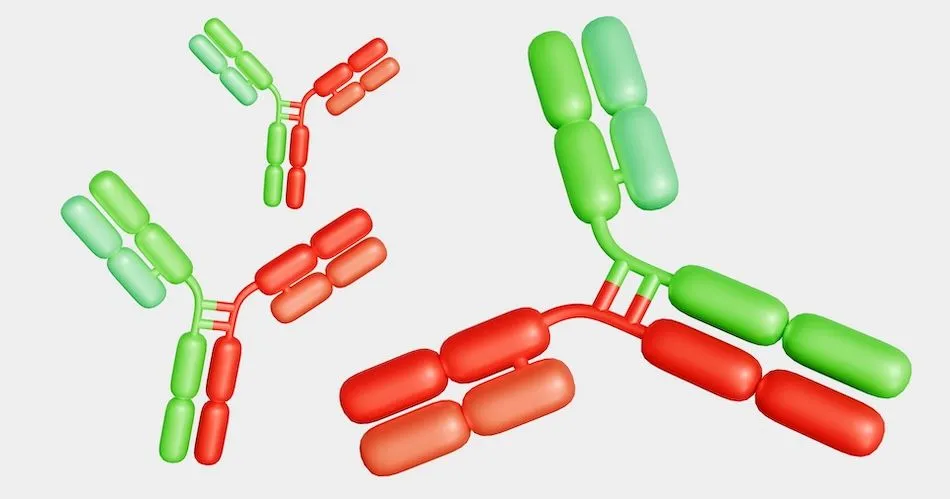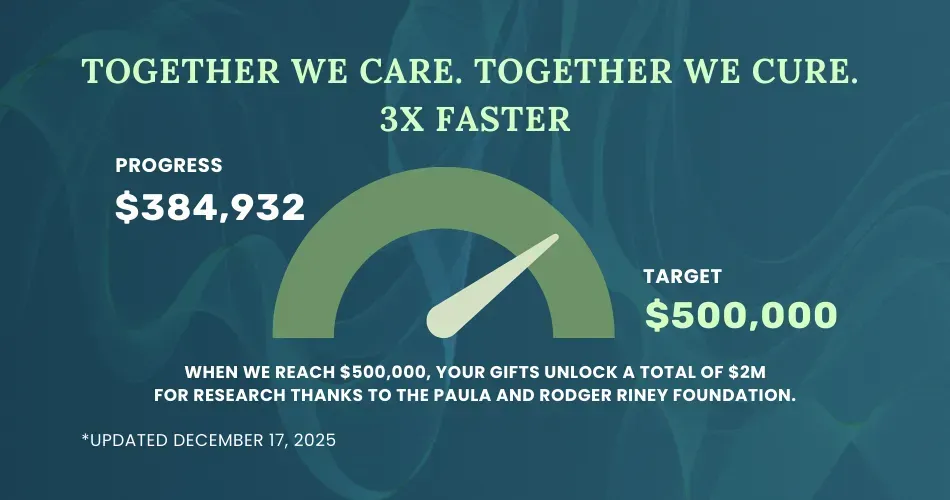Glofitamab (Columvi) to Treat Relapsed or Refractory DLBCL

Diffuse Large B-Cell Lymphoma (DLBCL) is an aggressive form of non-Hodgkin lymphoma, but even after successful initial treatment, a significant hurdle remains. Up to 60% of patients experience relapse within the first two years of remission. This recurrence can be devastating, with limited treatment options and a significant drop in survival rates.
Glofitamab Is Being Evaluated for DLBCL Patients
Glofitamab (Columvi, Roche) is a bispecific antibody designed to target CD3 on the surface of T cells and CD20 on the surface of B cells. It redirects a patient’s T cells to eliminate malignant B cells.
Side effects may include:
- Cytokine Release Syndrome (CRS): This occurs when your immune system responds to infection or immunotherapy drugs more aggressively than it should. Symptoms include fever, nausea, fatigue, and body aches.
- Neurologic problems: Headache, confusion, dizziness, shaking, numbness.
- Increased risk of infections.
Promising Initial Results With Glofitamab-based Combinations
Glofitamab is being investigated alone and in combination with other medicines, including polatuzumab vedotin (Polivy), in earlier lines of treatment for people with B-cell non-Hodgkin lymphomas, including diffuse large B-cell lymphoma and other blood cancers.
In April 2024, the manufacturer announced that the phase III study STARGLO has shown that patients with relapsed or refractory DLBCL treated with glofitamab with standard chemotherapy (GemOx; gemcitabine and oxaliplatin) live significantly longer than those treated with rituximab and GemOx.
This study included relapsed or refractory patients who had received one previous line of treatment and were not eligible for a stem cell transplant. The sponsor will release more data in an upcoming medical conference.
Conclusion
Diffuse large B-cell lymphoma (DLBCL) is the most frequent type of non-Hodgkin's lymphoma (NHL), accounting for about one-third of all cases. DLBCL is a fast-growing and aggressive form of NHL that responds well to treatment in the initial stages. However, many individuals suffer from relapse or refractory disease, which limits their options for salvage therapy and results in poor survival rates. Enhancing treatments during the early stages of the disease and offering alternative options can aid in improving long-term outcomes.
Stay updated with HealthTree for DLBCL on the latest treatment advances:
Sources:
- Roche’s Columvi meets primary endpoint of overall survival in people with relapsed or refractory diffuse large B-cell lymphoma in Phase III STARGLO study
- A Phase III Study Evaluating Glofitamab in Combination With Gemcitabine + Oxaliplatin vs Rituximab in Combination With Gemcitabine + Oxaliplatin in Participants With Relapsed/Refractory Diffuse Large B-Cell Lymphoma
Diffuse Large B-Cell Lymphoma (DLBCL) is an aggressive form of non-Hodgkin lymphoma, but even after successful initial treatment, a significant hurdle remains. Up to 60% of patients experience relapse within the first two years of remission. This recurrence can be devastating, with limited treatment options and a significant drop in survival rates.
Glofitamab Is Being Evaluated for DLBCL Patients
Glofitamab (Columvi, Roche) is a bispecific antibody designed to target CD3 on the surface of T cells and CD20 on the surface of B cells. It redirects a patient’s T cells to eliminate malignant B cells.
Side effects may include:
- Cytokine Release Syndrome (CRS): This occurs when your immune system responds to infection or immunotherapy drugs more aggressively than it should. Symptoms include fever, nausea, fatigue, and body aches.
- Neurologic problems: Headache, confusion, dizziness, shaking, numbness.
- Increased risk of infections.
Promising Initial Results With Glofitamab-based Combinations
Glofitamab is being investigated alone and in combination with other medicines, including polatuzumab vedotin (Polivy), in earlier lines of treatment for people with B-cell non-Hodgkin lymphomas, including diffuse large B-cell lymphoma and other blood cancers.
In April 2024, the manufacturer announced that the phase III study STARGLO has shown that patients with relapsed or refractory DLBCL treated with glofitamab with standard chemotherapy (GemOx; gemcitabine and oxaliplatin) live significantly longer than those treated with rituximab and GemOx.
This study included relapsed or refractory patients who had received one previous line of treatment and were not eligible for a stem cell transplant. The sponsor will release more data in an upcoming medical conference.
Conclusion
Diffuse large B-cell lymphoma (DLBCL) is the most frequent type of non-Hodgkin's lymphoma (NHL), accounting for about one-third of all cases. DLBCL is a fast-growing and aggressive form of NHL that responds well to treatment in the initial stages. However, many individuals suffer from relapse or refractory disease, which limits their options for salvage therapy and results in poor survival rates. Enhancing treatments during the early stages of the disease and offering alternative options can aid in improving long-term outcomes.
Stay updated with HealthTree for DLBCL on the latest treatment advances:
Sources:
- Roche’s Columvi meets primary endpoint of overall survival in people with relapsed or refractory diffuse large B-cell lymphoma in Phase III STARGLO study
- A Phase III Study Evaluating Glofitamab in Combination With Gemcitabine + Oxaliplatin vs Rituximab in Combination With Gemcitabine + Oxaliplatin in Participants With Relapsed/Refractory Diffuse Large B-Cell Lymphoma

about the author
Lisa Foster
Lisa Foster is a mom of 3 daughters and 1 perfect grandchild, a puzzle lover, writer and HealthTree advocate. She believes in the mission of the foundation and the team that builds it forward. She calls Houston, Texas home.
More on Clinical Trials
Trending Articles
Get the Latest Large B Cell Lymphoma Updates, Delivered to You.
By subscribing to the HealthTree newsletter, you'll receive the latest research, treatment updates, and expert insights to help you navigate your health.
Together we care.
Together we cure.
3x Faster.









